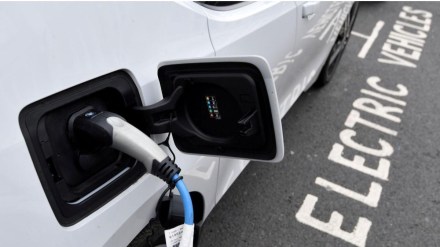By Shailesh Chandra
With a strong GDP growth rate of 7.3%, India has emerged as the world’s fastest-growing large economy and is expected to become the third-largest economy in the world, exceeding $5 trillion in the next three to four years. A key driver for India’s growth is a young population, which offers the nation a unique demographic advantage in terms of increased consumption and productivity. India’s growing global position was evident during the 2023 G20 Presidency, where India played a pivotal role in shaping the agenda for the upcoming decade, particularly emphasising the urgent global issue for climate change.
Research from US EPA indicates that 65% of the global carbon dioxide emissions come from burning fossil fuels, which contributes to rising temperatures and climate change. To counter this, developed countries are embracing Net Zero emission goals, and are enacting laws to encourage zero-emission solutions in energy and transportation. The government of India has strongly endorsed Net Zero, as evident in Prime Minister Narendra Modi’s commitment at COP26 to reduce India’s carbon intensity by 45% by 2030 and achieve net zero by 2070. Furthermore, the recent call to “transition away from fossil fuels” during COP28 in Dubai highlights the urgency to achieve net zero emissions by 2050. Therefore, the global focus is set to centre on the shift to zero-emission technologies over the next five years.
As India experiences a robust economic upswing, individuals are gaining purchasing power, leading to a higher demand for automobiles. In the next five years, India will see an addition of over 20 million cars and trucks with over 80 million two-wheelers. If the current fuel mix were to continue, the future vehicle parc would result in a substantial rise in the carbon footprint of the Indian automobile sector. To counter this, the focus on the adoption of electric vehicles should intensify as EVs offer the lowest lifecycle carbon footprint due to their zero tailpipe emissions. As India’s solar capacity is set to quadruple to 293 GW by 2030, an electric vehicle’s emission is expected to be 30-63% lower than a gasoline counterpart’s. Innovations like solar rooftops can make EV usage entirely carbon-neutral, forming a key national imperative for the next five years.
India joined the EV sector relatively late, with only about 2% of cars and 5% of two-wheelers currently being electric. The central government has taken significant steps to promote EVs, such as reducing GST, offering FAME II incentives, and introducing PLI schemes. State governments are also contributing through road tax and registration waivers, as well as establishing charging infrastructure through discoms.
The Indian government aims to achieve 30% EV penetration of new car sales by 2030; however, the path to the same requires their significant mainstream adoption. Customer studies indicate that awareness and accessibility of charging infrastructure is the primary hurdle for EV adoption. While 90% of existing EV owners charge at home, not all Indian vehicle owners enjoy this convenience. To ensure greater adoption for EVs and reduce charging-related anxiety, there is a need for collaborative efforts to be taken between the government, municipalities, property owners, charge point operators, and OEMs to deploy chargers in residential and commercial buildings, electrifying at least 10% of parking lots. This will create greater awareness and increase the consideration for EVs.
Additionally, developing a local supply chain for EVs could establish a substantial manufacturing base, making India a global export hub. The ministry of skill development and entrepreneurship estimates that the EV industry could create 10 million direct jobs and 50 million indirect jobs by 2030. Additionally, India’s focus on EVs is expected to generate valuable intellectual property, fostering innovation and seeding new industries in the country.
The global imperative over the next five years is transitioning to zero-emission technologies to combat climate change. Prioritising the acceleration of EV adoption is an important peg in this strategy for all major economies. India can drive rapid adoption of EVs, positioning itself as a leading force combatting climate change. This strategic move has the potential to establish India as a prominent hub for EV manufacturing, generating millions of jobs and fostering the development of cutting-edge intellectual property in future technologies. This, in turn, lays a robust foundation for sustained national growth and prosperity.
The author is Managing director, Tata Motors Passenger Vehicles & Tata Passenger Electric Mobility. Views expressed are personal.
